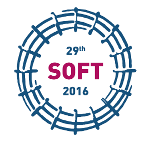Speaker
Jean-Marie Noterdaeme
(Applied Physics Department)
Description
High performance H-mode plasmas are characterized by short, repetitive edge perturbations known as edge-localized modes (ELMs). Large, unmitigated ELMs can result in significant transient heat loads released onto the plasma-facing components. Hence, characterization of ELMs and their control are crucial for avoiding a significant reduction in the divertor lifetime. This necessitates discrimination of different observed classes of ELMs and determination of operational boundaries for ELMy regimes. In this work, a parametric statistical classification system for ELM types using discriminant analysis has been developed and has been applied for the classification of type I and type III ELMs in a set of JET carbon wall plasmas. The classifier provides success rates up to 90% and renders itself as a fast, standardized classifier of ELM types, complementary to phenomenological approaches based on human expertise. Further, linear discriminant functions are constructed for determining the boundary between type I and type III ELMy regimes, both in terms of plasma engineering parameters as well as dimensionless physics parameters. The functions provide an insight into the dependence of the boundary on the plasma and machine conditions and identify the parameters which contribute most to the type I/III boundary. The classifier for ELM behavior developed in this work significantly reduces the effort of ELM experts in identifying ELM types, while the boundary in terms of engineering or physics parameters provides insight into the range of conditions under which specific ELM behavior occurs.
Co-authors
Aqsa Shabbir
(Applied Physics Department, Ghent University, B-9000 Gent, Belgium;Max Planck Institute for Plasma Physics, D-85748 Garching, Germany)
Geert Verdoolaege
(Applied Physics Department, Ghent University, B-9000 Gent, Belgium;Laboratory for Plasma Physics, Royal Military Academy, B-1000 Brussels, Belgium)
Gregoire Hornung
(Applied Physics Department, Ghent University, B-9000 Gent, Belgium)
Jean-Marie Noterdaeme
(Applied Physics Department, Ghent University, B-9000 Gent, Belgium;Max Planck Institute for Plasma Physics, D-85748 Garching, Germany)

